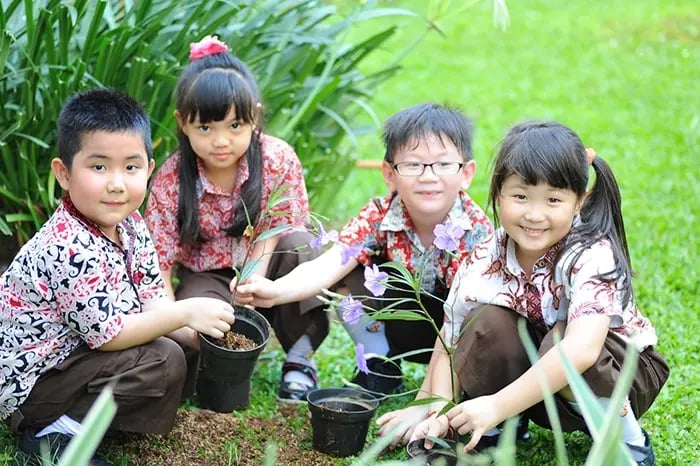Introduction
Gardens provide endless ways in which young kids can learn and develop. With the growing problem of obesity and associated disorders, one of the most exciting possible aspects from teaching gardening is their potential to inspire young gardeners through the process of raising edible crops and then enjoying the fruits of their labors. It is in this regard that a home garden offers the best tool regarding upgrading kids' diets, since it allows one to have real-life experience and literally sees things growing right in front of their eyes, engaging with the food in fullness. When children get their hands in the soil, such an act builds an emotional connection with the garden and what they are growing. They plant the seeds and attend to the plants for several weeks or months before harvest, which plays a key role in creating pride and anticipation while waiting for such harvest. So, when it comes time to start harvesting vegetables, they're more primed to appreciate and enjoy what they have grown, and therefore more willing to be open-minded about the new dishes that are prepared with the results of their hardwork.
Plant a Rainbow
In addition to providing essential sources of vitamins, minerals and fiber, fruits and vegetables are associated with preventing health concerns, including stroke, cancer and heart disease. These are attributed to phytonutrients—plant substances that, even though not known as vitamins or minerals, provide our body with a boost to health. Factors such as the amount and kind of phytonutrients vary among the different types of fruits and vegetables, so variety is important. One fun way to convey this message to your kids is using the "Eat a Rainbow" concept. Planting a rainbow of vegetables may be a fun approach to getting your kids involved in your garden. Consider varieties in unusual colors: purple eggplants, yellow pepper, orange carrots. Growing a mix of colors side by side creates an interesting taste test at harvest time. Get kids excited about learning and eating their nutrients.
What Part of the Plant Are We Eating?

Kids learn and have fun when they learn about different plant parts. Thinking about parts of plants when growing and preparing many vegetables connects botany lessons, of the plant's body structure, and nutrition lessons, of what to expect in vegetable food sources. For example, most underground structures, like carrots, beets, and potatoes, have stored carbohydrates. Most leafy green vegetables, such as spinach, fenugreek and lettuce, are low in carbohydrates and are concentrated with vitamins and minerals. Seeds, such as corn, peanuts, and sunflower seeds are dense with oils, protein, and carbohydrates, which fuel new plants to grow. By learning about these different parts and their nutritional value, kids will appreciate where their food comes from and why it's healthy.
Plant a Recipe Garden
Growing all of the ingredients needed to make a favorite recipe is a fun way to get kids interested in gardening and cooking. You could plant a Pizza Garden with tomatoes, basil, peppers, and onions. A Salad Garden could hold herbs, carrots, radishes, tomatoes, and cucumbers. Other ideas include a Smoothie Garden with mangoes, spinach, strawberries, and mint. With a recipe garden, kids can tangibly relate what they are growing to what they are going to eat. This makes the action of cooking and eating much healthier, much more real and satisfying.
Nutritional Experiments
Nutrition experiments on vegetables will be both enjoyable and educational for the children. For example, you can check the taste and nutritional value of self-grown vegetables against store-bought ones. Observe how different growing conditions impact taste and nutrition. Practical exposure like this will make children realize the worth of fresh, homegrown produce and develop healthy eating habits.
Involve Kids

Let them work, from planning to planting and harvesting to cooking. This gives them a complete understanding of food production and its nutrition. Let them select plants, prepare the soil, sow seeds, water plants, and harvest the produce. All this builds a sense of ownership and pride in their garden. Further, children can be engaged in cooking using the harvested produce, explaining to them how to prepare healthy meals from these fruits and vegetables that they have grown.
Keep a Gardening Journal
Keeping a journal about their gardening activity could help children learn more from this activity. In this journal, they can record everything that had taken place that involved the process of planting, various stages of growth, and problems faced. They may write down the recipes they have tried out, giving their suggestions for taste and health values obtained from the various vegetables. This doesn't just give reinforcement for learning; one gets to be creative by putting down their experiences and observations on paper. This way, it becomes a garden journal that one can save and enjoy because it documents how one's plants go from seed to plate.
Deepali is a senior food and wellness writer with over a decade of experience in top media houses, crafting engaging narratives. She is a professional home baker and loves exploring food from every corner of the world to reading cookbooks. She believes a healthy lifestyle is a combination of both mental and physical fitness. Her goal always remains to keep moving, eating seasonal and practicing gratitude.
The views expressed are that of the expert alone.
The information provided in this content is for informational purposes only and should not be considered a substitute for professional medical advice, diagnosis, or treatment. Always seek the advice of your physician or another qualified healthcare provider before making any significant changes to your diet, exercise, or medication routines.
References
https://kidsgardening.org/resources/gardening-basics-teaching-nutrition-in-the-garden-4/
















